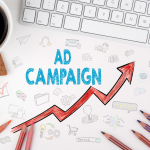 You don’t need to be a graphic design extraordinaire to succeed in creating your own visual elements for social media, but there are nevertheless plenty of instances in which you might be making design mistakes without even realizing it. Worse still, these seemingly minor mistakes could be causing lower engagement rates with your ads or driving followers away from your social pages.
You don’t need to be a graphic design extraordinaire to succeed in creating your own visual elements for social media, but there are nevertheless plenty of instances in which you might be making design mistakes without even realizing it. Worse still, these seemingly minor mistakes could be causing lower engagement rates with your ads or driving followers away from your social pages.
To make sure you aren’t distracting your followers with tacky images or poorly designed visual elements, here’s a nifty checklist to help you assess whether your visual marketing strategy needs a makeover:
Poor Color Choices
According to the marketing fundamentals color theory, consumers typically decide whether or not they like a product within 90 seconds, and 90% of those consumers typically base their decisions on the color. The same logic applies to social media images, visual advertising collateral, on-page elements like profile pictures and cover photos…and so on. If your images are more eyesores than they are eye-catching, then you may be inadvertently driving people away from your pages and ads.
Wrong Size Images
Unless you have a strong foundation in graphic design, you might not realize just how big of a difference image sizing can make in the appearance of photos and ad visuals on social media. If you use the wrong sized image for a profile photo or mobile ad, then you might be accidentally frustrating your followers and potential customers who expect high-quality images for everything they might spend time and money on. To make sure you’re using the appropriate sizing for every image you post to social media, this image sizing cheatsheet can help you cover your bases.
Unreadable Cover Photos
Speaking of image sizing: do you presently include text in your Facebook cover photo and/or Twitter banner? If so, then the text might not be as readable as you might imagine. Cover photos may appear differently on a desktop versus a mobile app. A common mistake some marketers make with their brand’s cover photos is pasting the full logo or text about a new promotional offer without testing to see whether page visitors will be able to view it properly. For best results, avoid using text in your cover photos as much as possible unless the image is specifically designed (and sized) for a cover photo.
Too Much Text Overlaying Images
Perhaps your profile pictures and cover photos are fine, but what about your actual posts? If there is text on 20% or more of an image included in your post, Facebook and Instagram’s ad managers will reject it. Even if the image is intended for organic engagement with followers, plastering too much text on your visual elements can be distracting and unpleasing to look at. For best results, keep your social images text-free and save your message for the actual text area of the post, not the image itself.
Blatantly Obvious Stock Photos
A final design mistake you should watch out for while working on your marketing collateral is using images that are so clearly stock photos that the people, animals, food, drinks and other elements don’t even look real. The goal for images – particularly on social media – is to capture your audience’s attention, and the best way to accomplish this is by incorporating high-quality, realistic photos into your visual toolbox.
People relate best to images when the people/places/things look similar to themselves and other things in their lives. Although it would be difficult for most brands to produce all of their own photography, it’s important to at least balance your occasional use of stock photos with realistic imagery that reflects your target audience’s personalities, wants, needs and lifestyles.







